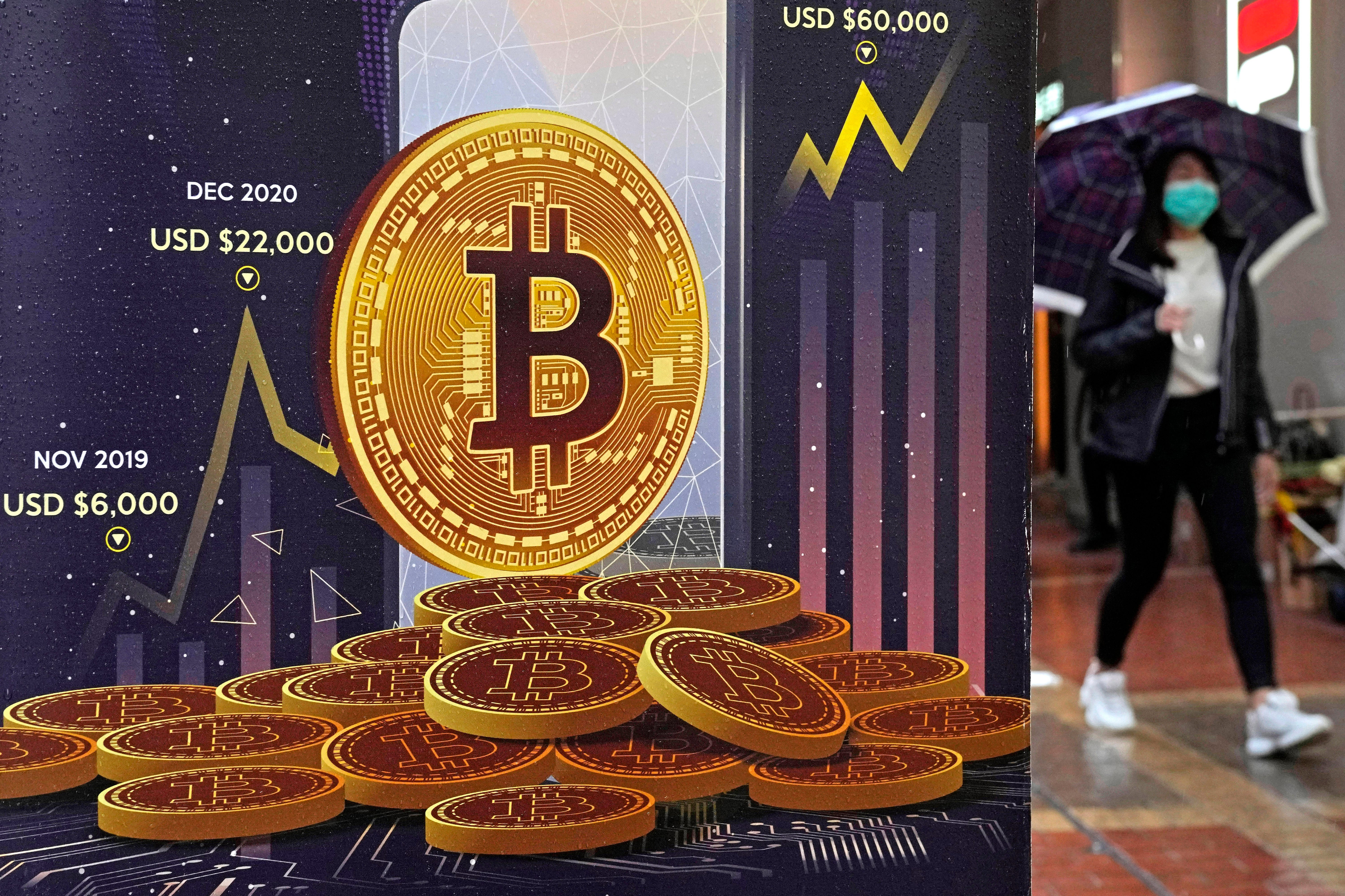Bitcoin briefly hits an all-time high, less than two years after FTX scandal clobbered crypto
Bitcoin has hit an all-time high less than two years after the collapse of the crypto exchange FTX severely damaged faith in digital currencies and sent prices plunging

Your support helps us to tell the story
From reproductive rights to climate change to Big Tech, The Independent is on the ground when the story is developing. Whether it's investigating the financials of Elon Musk's pro-Trump PAC or producing our latest documentary, 'The A Word', which shines a light on the American women fighting for reproductive rights, we know how important it is to parse out the facts from the messaging.
At such a critical moment in US history, we need reporters on the ground. Your donation allows us to keep sending journalists to speak to both sides of the story.
The Independent is trusted by Americans across the entire political spectrum. And unlike many other quality news outlets, we choose not to lock Americans out of our reporting and analysis with paywalls. We believe quality journalism should be available to everyone, paid for by those who can afford it.
Your support makes all the difference.Bitcoin has hit an all-time high less than two years after the collapse of the crypto exchange FTX severely damaged faith in digital currencies and sent prices plunging.
The world's largest cryptocurrency jumped 4% this week and briefly surpassed $68,800 Tuesday, according to CoinMarketCap. That's just above bitcoin's previous record set in November 2021.
The volatile asset soon fell some, standing at just under $62,000 as of 3 p.m. ET, but the price is still up more than 175% from one year ago.
Gains in recent months have been fueled by the anticipation, and eventual U.S. approval, of bitcoin exchange traded funds earlier this year, which provided access to a much broader class of investors. The price for bitcoin has surged about 60% since the approval of bitcoin ETFs in January, an easy way to invest in assets or a group of assets — like gold, junk bonds or bitcoins — without having to directly buy the assets themselves.
Also driving prices is what is known as bitcoin “halving” which is anticipated in April. Halvings trim the rate at which new coins are mined and created, thus lowering the supply.
Here's what you need to know.
EARLY SUCCESS OF BITCOIN SPOT ETFS
In January, the U.S. Securities and Exchange Commission approved the first spot bitcoin ETFs from asset managers including Blackrock, Invesco and Fidelity. These newly approved ETFs hold actual bitcoin — unlike previous bitcoin-related ETFs that were invested in contracts related to future price bets, but not on the cryptocurrency itself.
While regulators have pointed to persisting risks and maintained reluctance around January’s decision, the greenlight marked a major win the crypto industry.
Institutional demand for bitcoin show "no signs of slowing down,” H.C. Wainwright’s Mike Colonnese and Dylan Scales wrote Tuesday — adding that bitcoin's popularity “is likely to accelerate in the coming months as more wealth management platforms make spot (bitcoin) ETFs accessible to their clients.”
Using data from crypto platform BitMEX, Colonnese and Scales estimated that the 10 bitcoin ETFs averaged $302 million in net daily inflows for the month of February. Last week alone, these spot ETFs booked record inflows of $1.7 billion — bringing total net inflows to $7.5 billion since their Jan. 11 launch.
HALVING ON THE HORIZON
Increased demand is also aligning with bitcoin’s next halving event, which is expected at the end of April.
Bitcoin halving, which occurs every four years, is when the reward for bitcoin mining is cut in half. This reduces how fast new coins are created — making supply scarcer.
While analysts say that constrained supply in a time of high demand can push bitcoin’s price higher over time, others point to significant volatility that has resulted before and after halving events — and the possibility of sizable declines.
“Past history may not be a reliable guide to predict how the upcoming halving of bitcoin will influence its value,” Rajeev Bamra, senior vice president of digital finance at Moody’s Investors Service, noted. “Various external factors, market sentiment shifts, and regulatory developments can influence the trajectory of Bitcoin’s price.”
A HISTORY OF VOLATILITY
Bitcoin has a history of drastic swings in value — which can come suddenly and happen over the weekend or overnight in trading that continues at all hours, every day.
Bitcoin rocketed from just over $5,000 at the start of the pandemic to its November 2021 peak of nearly $69,000, in a period marked by a surge in demand for technology products. Prices crashed during an aggressive series of Federal Reserve rate hikes intended to cool inflation, slow money flows and make risky investments potentially riskier. Then came the 2022 collapse of FTX, which significantly undermined confidence in crypto.
At the start of last year, a single bitcoin could be had for less than $17,000. Investors, however, began returning in large numbers as inflation started to cool. And 2023’s collapse of prominent tech-focused banks actually led more investors to turn to crypto as they bailed out of positions in Silicon Valley start-ups and other risky bets.
Despite the recent excitement around bitcoin, experts still maintain that crypto is a risky bet with wildly unpredictable fluctuations in value. In short, investors can lose money as quickly as they make it.
“It’s essential to exercise caution and acknowledge that the road ahead for the digital finance ecosystem, particularly the crypto markets, is expected to navigate through a period marked by volatility,” Bamra noted — pointing the importance of “cautious optimism.”